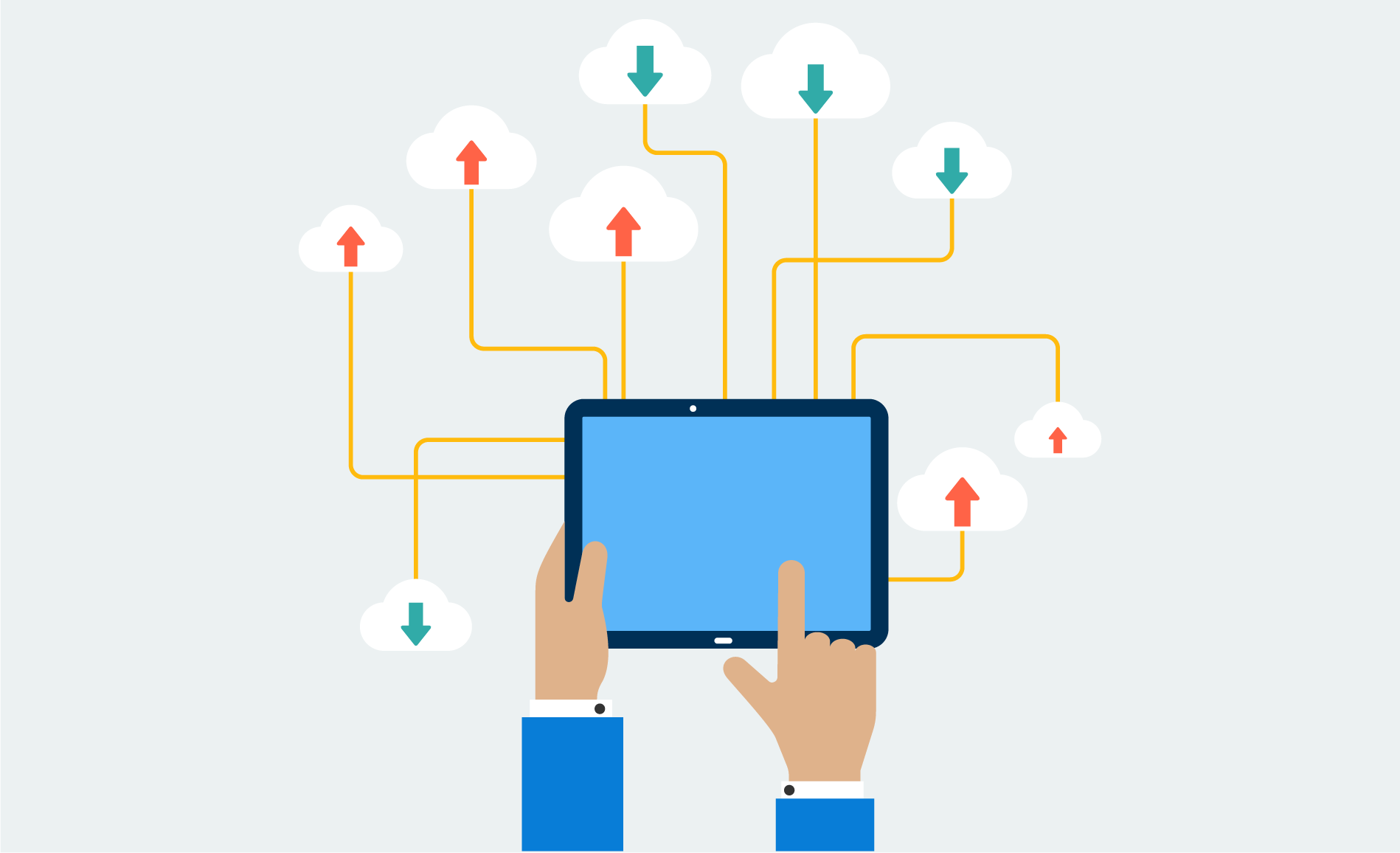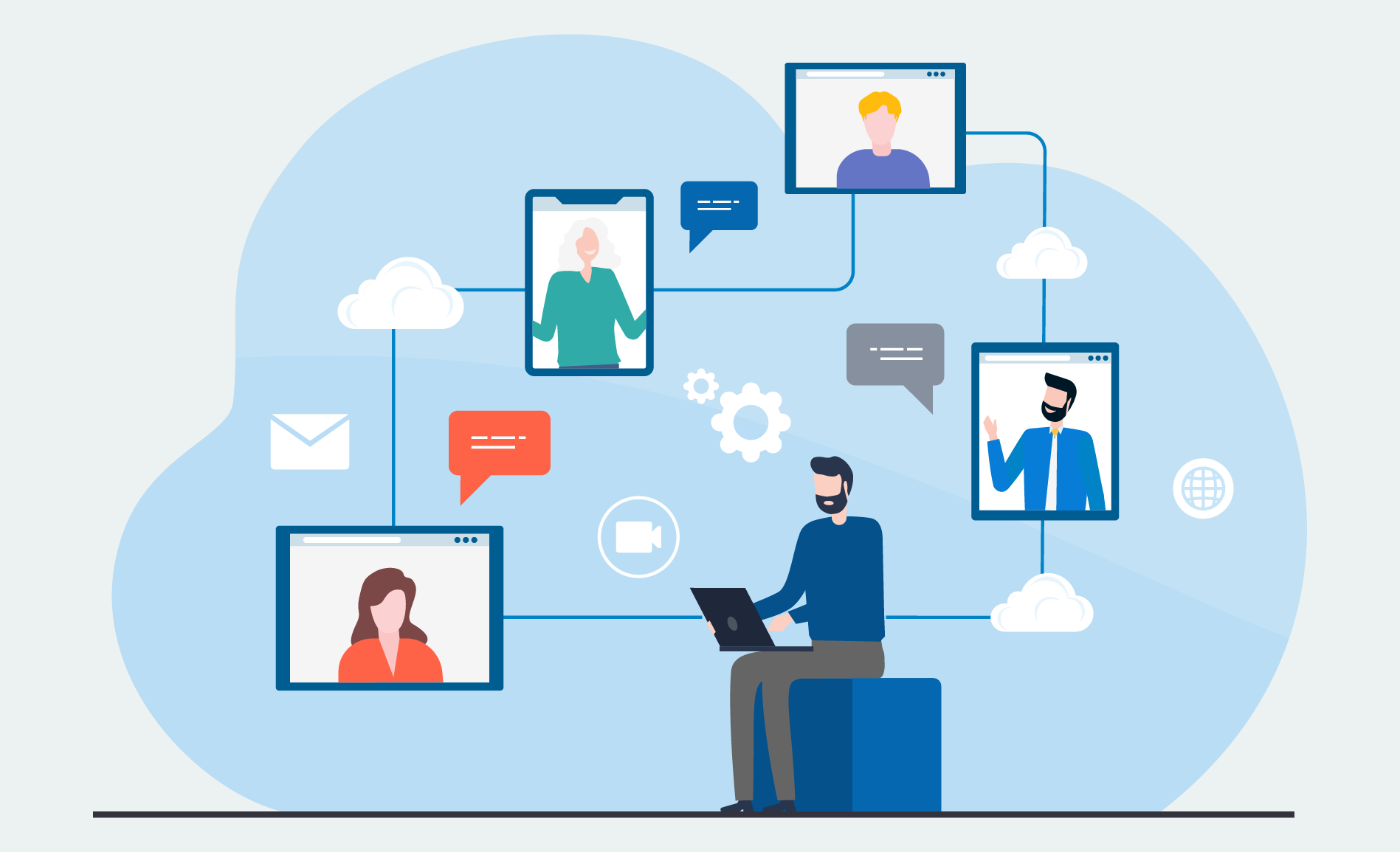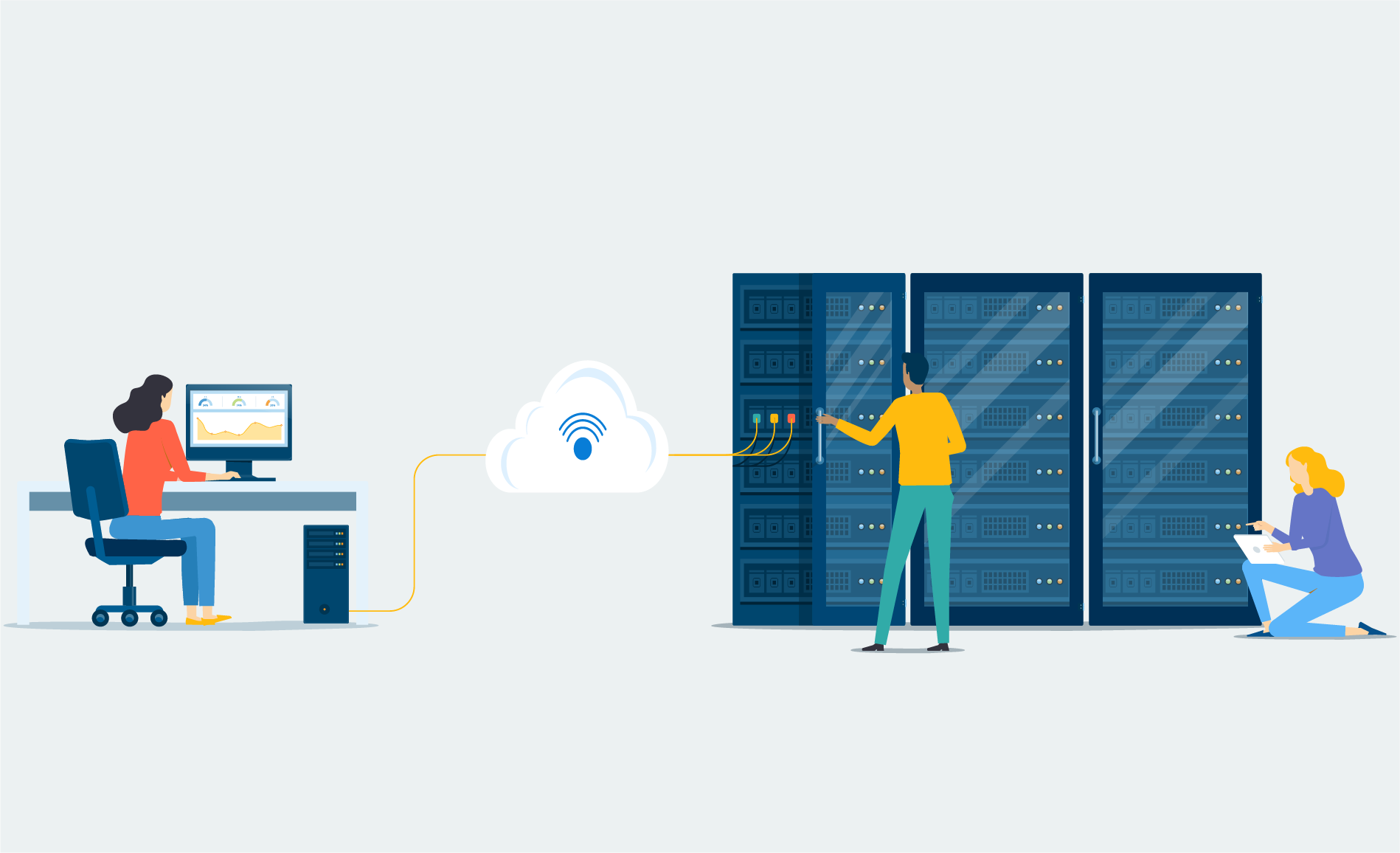This blog is all about how to build a remote workforce. Remote workers are fast becoming a corporate cultural norm. A 2017 study from Global Workplace Analytics shows that regular work-at-home has grown by 115% since 2005, which is nearly 10x faster than the rest of the workforce, and employees of Fortune 1,000 companies aren’t at their desks 50-60% of the time.
With technology (like Office 365) opening up vast possibilities for the remote worker to stay in touch with their in-office colleagues and be more productive no matter where they’re located, it’s no wonder that organizations are beginning to consider using remote workforces. The benefits are certainly there: remote workers widen the talent pool available for your business, it can save you an average of $20,000 annually for each full-time employee that works remotely, and your employee productivity can increase by more than 30%!
Is your organization currently using or considering a remote workforce? If you haven’t already navigated the process of building a remote workforce, it can be a little daunting. So, in this blog, we’ll look at the three major considerations and tips for how to build a remote workforce.
Read along, and drop us a line if you need more tips on how to build your remote workforce!
3 Tips on How to Get Started Building A Remote Workforce
The rapid advancement society has made in technology, combined with the introduction of productivity apps and services (like Office 365) has led to a major strategic shift in organizational thinking when it comes to the remote workforce.
Whereas traditionally you may have had hesitation hiring an employee from a different city, nowadays, it’s not out of the question to hire someone from a different province, or even a different country to handle specific roles within your organization. The ability to hire someone based on their talent and qualifications rather than focusing on the borders that separate us is where our technological progress has brought us.
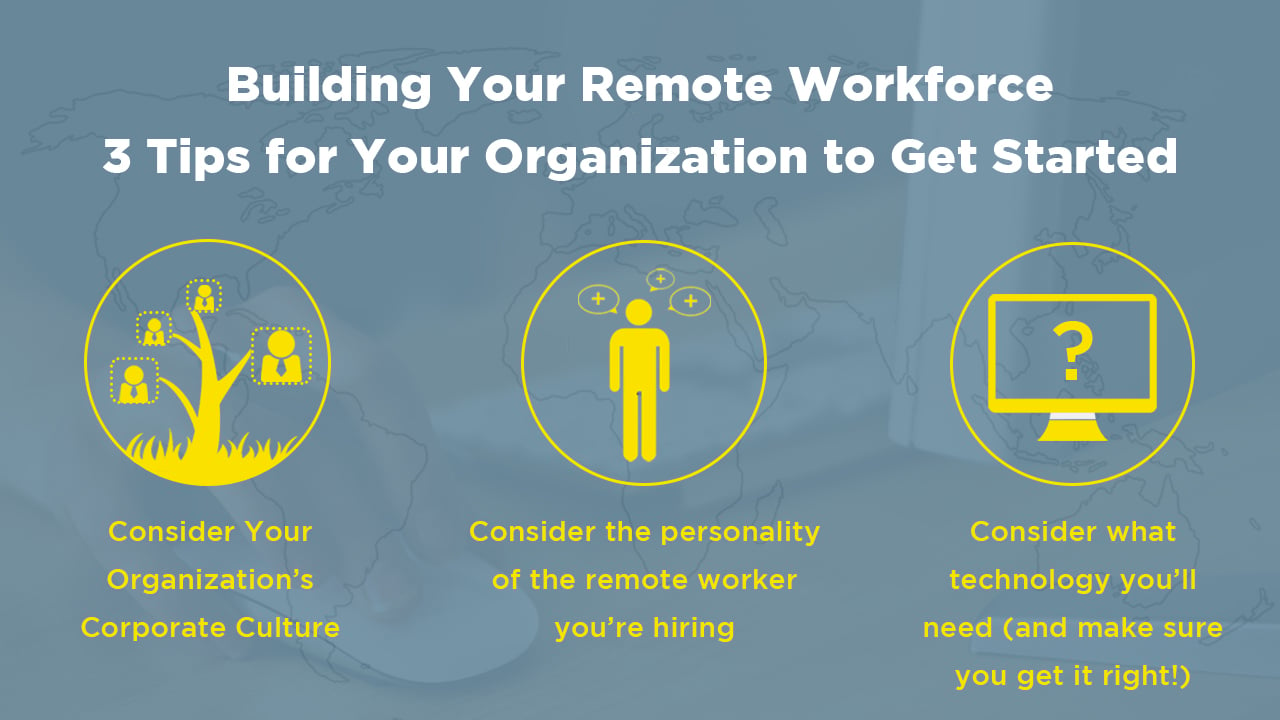
Here are three tips that you can take into consideration to get started building your remote workforce:
1. Consider your organization’s corporate culture.
- Are your managers/supervisors prepared to manage a remote worker?
- Is your organizational structure set up in such a way as to support remote workers?
- Do you have clear policies and procedures in place surrounding remote workers?
- Are there clear job responsibilities and expectations (in writing) to send to the remote worker once they’ve been hired?
2. Consider the personality of the remote worker you’re hiring.
- Is this person autonomous and focused enough to be productive when they’re not being monitored?
- Can this person collaborate with colleagues and self-manage to stay productive?
- Is the person a “self-starter”? Do they have discipline and a good work ethic?
3. Consider what technology you’ll need (and make sure you get it right)!
- What does your current IT infrastructure look like? Does it need upgrading to be able to support remote workers?
- How are you going to protect your corporate data?
- Will your remote workers be able to communicate efficiently and effectively with their colleagues?
- What tools are you going to implement to help the remote worker make sure they feel like a part of your team despite not being in the office?
3 Major Considerations for How to Build A Remote Workforce
Once you’ve made the decision to build a remote workforce, you need a plan on how you’re going to do it. Below, we’ve listed three major considerations for how to build your remote workforce:
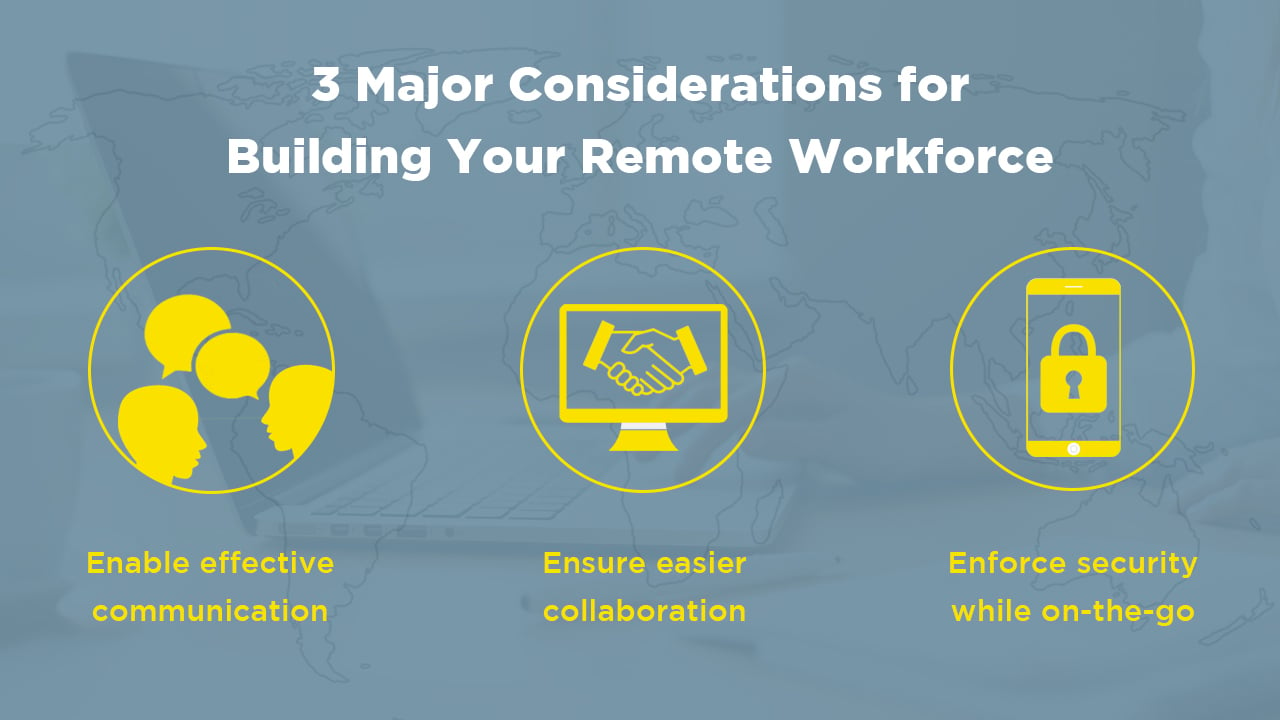
1. Enable Effective Communication
Your remote workers don’t have the regular face-to-face encounters with colleagues that their in-office counterparts have on a daily basis. So, to build your remote workforce, you need to ensure that you have enabled a way for your remote workers to effectively communicate with their team members and co-workers.
Immediate, seamless communication is a vital element for remote workers to be able to communicate effectively with their teams. Gone are the days where lengthy email communications would suffice (they can, quite literally, be lost in translation when dealing with colleagues in different countries), so implementing tools like Microsoft Teams, Skype for Business, Yammer, Slack, or Workplace by Facebook are good ways to open up the communication channels. These tools give your remote workers a platform to be able to text, voice, or video chat and communicate with others on the team.
By supplementing the in-person communication experience, your remote workers can communicate more effectively and feel connected to their colleagues.
2. Ensure Easier Collaboration
There is nothing worse than going to work on a file and realizing that you don’t have access to it. That’s why the second major consideration for how to build your remote workforce is to ensure that you have easier collaboration, which includes making sure that your remote workers have access to the pertinent information they need to do their jobs.
Consider a recent survey that suggested that an overwhelming 86% of workers blame the failures in the workplace on poor collaboration. By storing your data in the Cloud, rather than an atypical desktop/file storage solution, you can increase the capabilities for collaboration within your workforce.
That’s why you need to make sure you have solid collaboration tools, like SharePoint and OneDrive, firmly in place. Rather than having to rely on emails to share files, OneDrive and SharePoint act as a file repository where your remote workers can access critical project information, as well as co-author documents in real-time, from any device.
3. Enforce Security While On-The-Go
When it comes to remote workers, you need to consider the potential problems that may arise, like an increasing dependency on public Wi-Fi, or supplementing digital tools with personal hardware and software.
Safeguarding mobile strategy, however, should be one of the most important considerations when deciding how to build your remote workforce. How are you going to keep your corporate data secure when your remote workers are accessing these documents from public networks? What happens to your corporate data if your remote worker loses their device, or leaves the company?
To address these critical security issues, your organization can implement tools like Microsoft Enterprise Mobility Suite, Microsoft Intune, and Exchange Online Advanced Threat Protection, which are Cloud-based tools that can help you manage various parts of your security, especially across mobile devices.
Some of the content from this section was taken from the Microsoft eBook, “3 Critical Considerations for Building a Remote Workforce”. Download your copy here.
Let’s Get Started Building Your Remote Workforce!
Now that you know how to build a remote workforce, it’s time to get started! The good news is that Cloud-based solutions, like the ones we talk about in this blog, will help you to make sure that your organization is remote worker ready.
Need some more help getting started? ProServeIT, a Microsoft Gold Partner, has a long history of helping organizations implement several different Microsoft features and solutions. Contact our experts today to learn more about your options, discuss some of our offers designed to help you begin, and much more.
Stay tuned to our blog channel to learn more about remote workers, including what types of remote workers are out there and how you can support them – this post will be coming soon!
